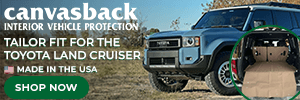I had a eye-opening conversation with someone who has been putting pinstripes on cars for the last 42 years.
He indicated most supposedly high-quality waxes contain solvents that over time dull your vehicles finish. These manufacturers do this to sell more product.. This includes one manufacturer that I’ve used for years that starts with an “M”.
According to him, there is only one product on the market he would recommend and that is Turtle Wax.
He has also off-roaded for years in Arizona off-road clubs and noted how many vehicles were scratched more than his after trips. The Turtle Wax forms a barrier to minimize scratches to some degree.
Make sure you read the label to ensure there are no solvents before buying to keep that original shine!
He indicated most supposedly high-quality waxes contain solvents that over time dull your vehicles finish. These manufacturers do this to sell more product.. This includes one manufacturer that I’ve used for years that starts with an “M”.
According to him, there is only one product on the market he would recommend and that is Turtle Wax.
He has also off-roaded for years in Arizona off-road clubs and noted how many vehicles were scratched more than his after trips. The Turtle Wax forms a barrier to minimize scratches to some degree.
Make sure you read the label to ensure there are no solvents before buying to keep that original shine!


